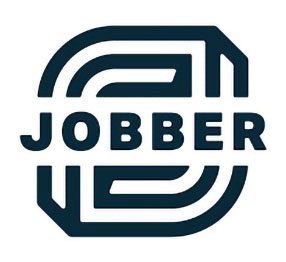
1. Use landscape management software
With the current state of technological advancement, you don’t want to rely on running your business manually while there is affordable landscape management software you can use like Jobber to make your internal processes and systems more efficient and productive. Software such as this helps you with tasks like:
- Scheduling and dispatching staff
- Organising all jobs and client details using a landscape CRM (customer relationship management)
- Booking more jobs by accurately quoting and estimating
- Managing cash flow and getting paid faster using invoicing tools
- Time-tracking in the field
Additionally, you present a more professional image to your clients when you communicate more effectively using technology, thus increasing their confidence in you and your business.
2. Train your staff
For continued business growth, you must invest conscientiously in training your staff. Knowledge is power. The more information they have on various aspects of landscaping and the business management of it, the better for your business.
For instance, they must learn how to accurately price the lawn care services they are providing. Sites like Jobber Academy have plenty of insightful information on how to tackle this. Staff training goes a long way to improving their competency, which is a critical ingredient to improving productivity.
3. Market your brand on social media
In this present day, your business needs to establish itself with a solid online presence. Most people may not have the time to visit your business premises physically to inquire about your services. Instead, many prefer looking up your business online. Therefore, create accounts on various social media sites like Facebook and Instagram. Remember to craft ways to engage with your followers meaningfully.
Additionally, take time to learn the marketing tactics of each social network. For instance, if you’re on Instagram, utilise branded hashtags to drive service-specific campaigns. You can also upload videos periodically showing your work. Similarly, you could join a local Facebook group to gain more exposure. Whenever people see your work, especially the ones from your geographical location, they may soon start to think of you when in need of the service you offer.
4. Maintain your tools properly
Efficiency starts with you having equipment that is functioning properly. Think of a scenario where one of your staff wants to trim grass for a client but can’t go because your lawnmower has broken down. This glitch may lower your business rating and you may lose frustrated customers to other competitors.
So, to ensure your machinery is reliable and always in good working condition, you can appoint one staff member to check them regularly. If maintenance is done well, your bottom line will ultimately be higher as you won’t have to keep spending money on purchasing or hiring machinery that has broken.
5. Track time
Time tracking in business is also another key factor for effective productivity. It assists you in tracking hours worked, following up on staff routines and ensuring efficient time spent while on a job. The hours can then be directly translated to payroll.
Another advantage of time tracking is that it helps you know the exact amounts of time you spend on each job, and how closely this matches with your estimates. This information will come in really handy when estimating time requirements for future jobs.
6. Price your services wisely
Reports indicate that a mere 1% betterment of your pricing strategy could raise your profits by 6%. In this sense, it’s critical to gain mastery over your pricing tactics. If you set your prices too high, you risk losing customers to your competitors. And if you price your services very low, you risk ending the year with little to no profit. You can even end up with huge losses if your pricing strategy isn’t up to scratch.
Accordingly, learn how to price your landscaping services. If it means taking a short course for this purpose, go for it. Don’t make the mistake of picking a random pricing strategy you stumbled upon somewhere and implementing it for your business before a thorough assessment of its feasibility. It might fail.
Start by learning the basics of pricing landscaping services. Essentially, the price you charge must meet the material, labour, and overhead costs, while leaving you with a decent profit. Once you’re assured of this, you can slightly alter the prices to fit a particular beneficial pricing strategy.
Conclusion
It’s possible to improve the efficiency, productivity and profitability of your landscaping business by following the right strategies. These include: the use of landscape management software, training your staff, marketing through social media, maintaining tools properly, and time tracking. By following these tips diligently, you can take practical steps to raising your annual income to the higher levels you desire.

























